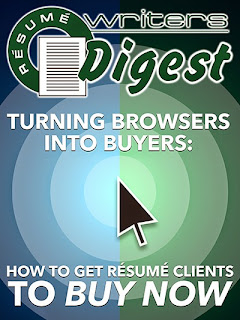From cave paintings to John Deer and even Jell-O, content marketing has been around for literally thousands of years. Anytime someone wanted to get the information out about anything, they could turn to content for the answers. Cookbooks are a great example of content marketing before the Internet. It was a list of products to buy. When combined in a particular way, it was delicious.
You could say the same is true for content marketing even today.
These days, content marketing is extra important because it's how you will get people to visit your website. It's also how you'll teach people about the issues that are important to them as a jobseeker, and hopefully turn them into a client.
- Digital Search Content. All content is fodder for search engine traffic. Search engines use the information on your blogs, websites, and social media to send your customers your way. They do this with the terms used in the content or in the "alt" descriptions.
- Social Media Content. Everything you put on social media is content. It doesn't matter if it's a meme, an image, words, a video, or something else; it is considered content. When you realize all that content encompasses, you quickly realize that yes, it is very important. It's not just a blog post or text; it is everything.
Content marketing can take on many shapes and forms. Some of these include:
- Blogs. These need to go out on a regular basis to help your visitors find your website. You can also write original guest blog posts sometimes to bring other audiences to you.
- Newsletters. These can be sent via email on a regular basis to keep your subscribers engaged and active.
- Magazines. Today, you can create an online magazine to help with marketing and informing your audience. Or seek out digital or print magazines that reach your target client.
- Podcasts. This is another way to put out information without having to type it. Instead you can record your thoughts and upload them to be listened to later. There are only a few podcasts on career topics, which is very surprising to me. There should be more. The breakthrough one will be the person who creates a call-in Q&A-type show like Dave Ramsey has for personal finance.
- Videos. YouTube is a great example of the power of video to get the word out about anything and teach others something that requires visuals.
- White Papers. These are long research documents that often compare and contrast the solutions to a problem discussed in depth. They are great for educating a wide audience without overtly advertising your solution. There's not enough independent research about career issues. Maybe you can be the person to change that.
- Ebooks. Using books to build your expertise is a great way to teach an audience about something that requires a lot of information. Today, publishing on Kindle is simple and free.
- Online Presentations. You can post PowerPoint slides on SlideShare.net and other presentation sharing sites as another way to keep your audience informed. Repurpose content by creating a short online presentation with its key points.
- Webinars. Growing in popularity due to their live nature and the way the audience can interact with the hosts, webinars are a very effective form of content. (Teleseminars are also still growing, due in large part because they don't require the user to understand technology. All they need is a phone.)
- Infographics. Often used on social media, infographics are a great way to help your audience picture important data visually.
- Games. If you can create an online game that teaches or markets some aspect of the job search to your audience, then you will have some really awesome content that gets results. (Let me know when you create this. I would love to promote it!)
- Branded Tools. Whether it's a job search app, a WordPress plugin or something else, creating a tool that your audience can use daily (even if ití' an old-fashioned planner) provides the type of content that will remind them that you're there.
As you see, content encompasses almost everything you do to market your resume writing business, inform people about your career services, and interact with people. That's why content is king. Content is the most important asset you own when it comes to digital marketing.






